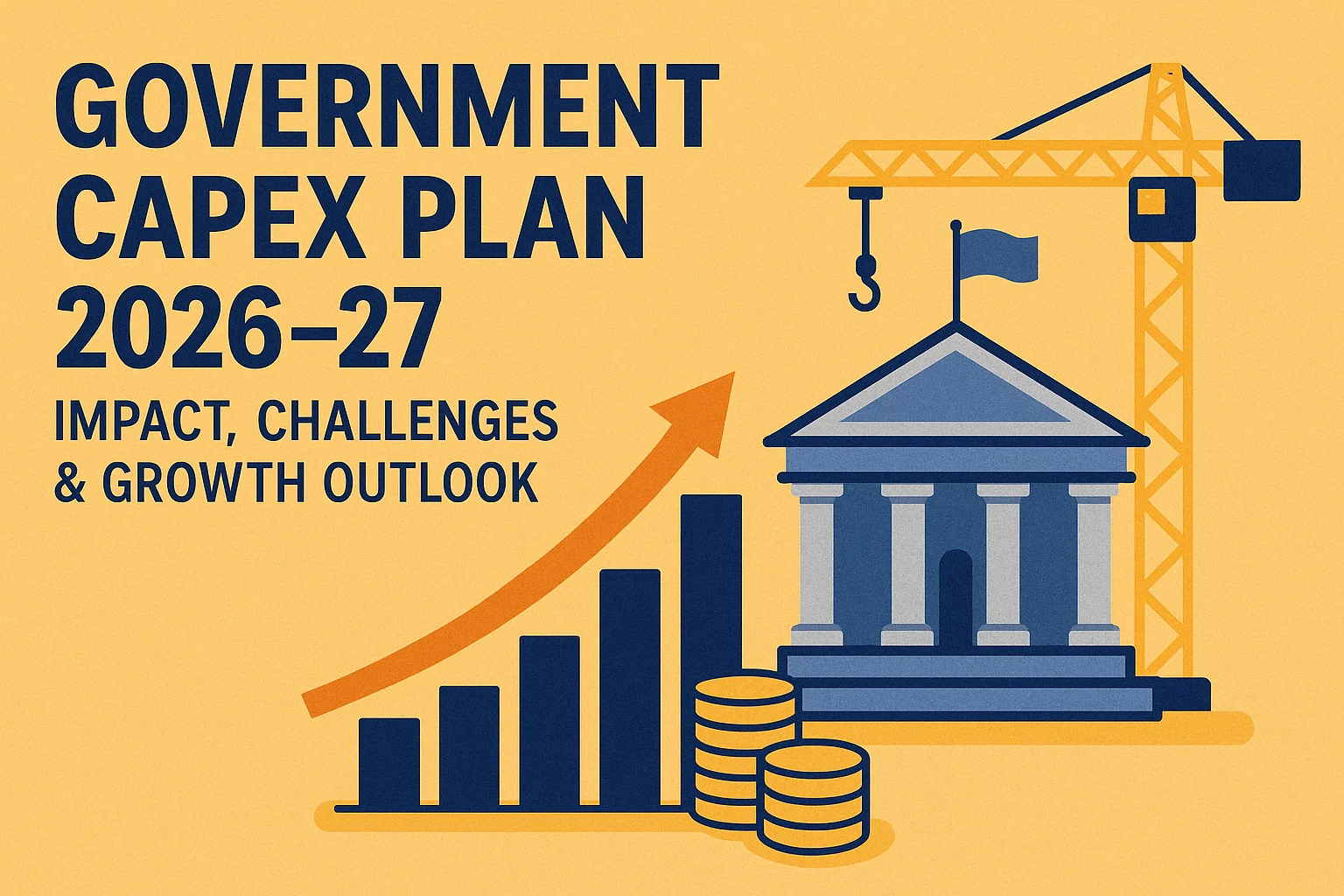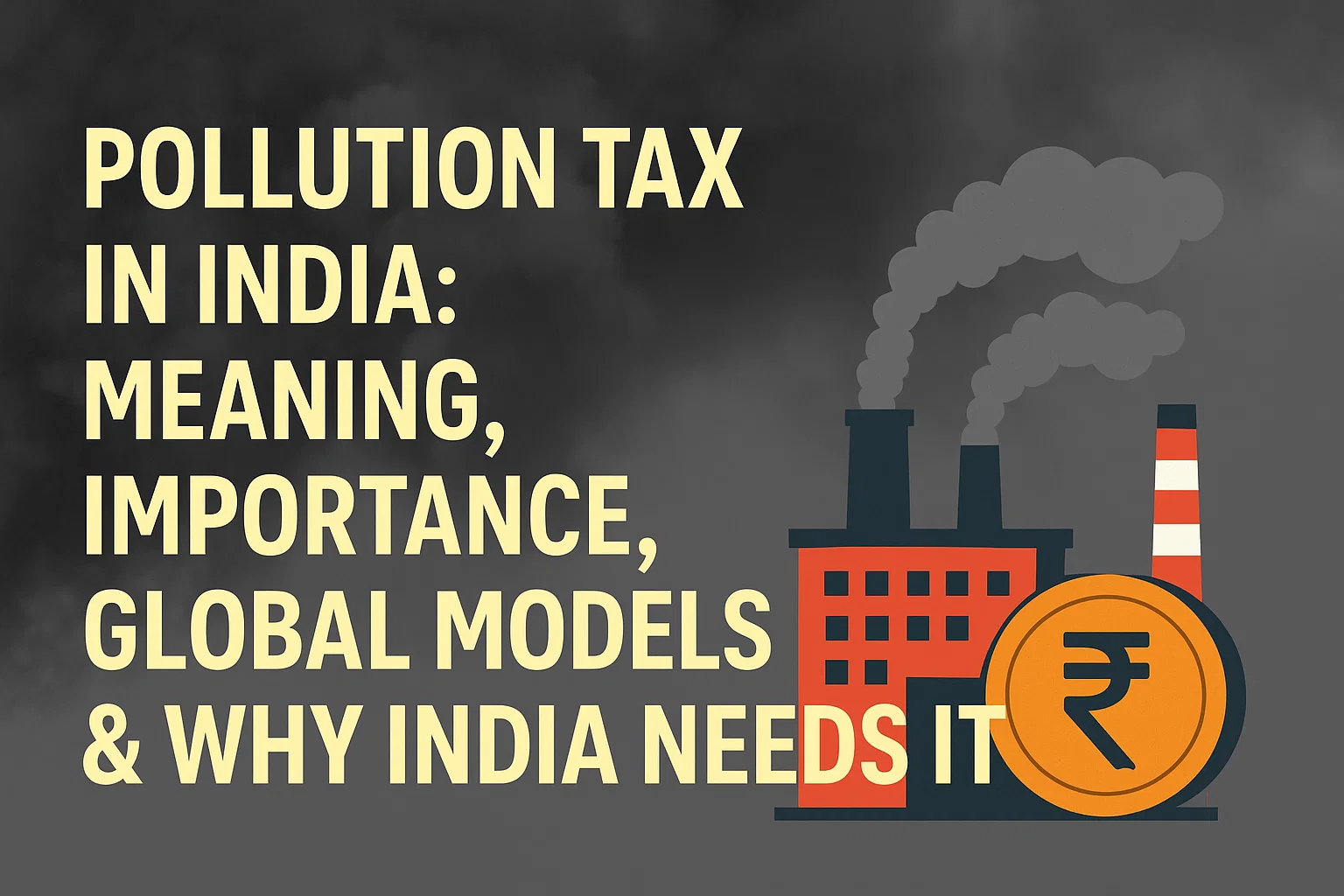Font size:
Print
Government Capex Plan 2026–27: Impact, Challenges & Growth Outlook | The Study IAS
India’s Union Budget 2026–27 is expected to maintain capital expenditure at 3.1% of GDP, signalling stable infrastructure-led growth. Learn what Capex is, why it matters, major challenges, PPP models, key sectors, and the role of private investment. Ideal for UPSC preparation.
Government Capital Expenditure Plan 2026–27: Key Insights for Growth and Infrastructure Development
As India prepares its Union Budget 2026–27, the government is expected to maintain capital expenditure at around 3.1% of GDP, signalling a focus on fiscal stability while sustaining infrastructure growth.
What is Capital Expenditure (Capex)?
- Definition: Capital Expenditure refers to long-term government spending on asset creation — such as highways, railways, ports, power plants, and digital infrastructure. Unlike revenue expenditure (which covers salaries, subsidies, and maintenance), capex enhances the economy’s productive potential.
- Current Scale: As per the Union Budget 2025–26, India’s capex allocation stands at ₹11.21 trillion, around 3.1% of GDP.
- Growth Role: Data from the Controller General of Accounts shows public investment has been the key driver of growth since FY21, compensating for weak private investment and export demand.
Why is Capital Expenditure Essential?
- High Multiplier Effect: The Economic Survey 2022–23 estimated that ₹1 spent on capital expenditure adds roughly ₹2.45 to GDP, much higher than the ₹0.99 return from revenue spending.
- Job Creation and Demand Boost: Capex drives employment in construction, manufacturing, and allied services, stimulating consumption and income growth.
- Strengthening Supply Capacity: It enhances logistics, energy, and industrial capacity — supporting both Make in India and export competitiveness.
- Crisis Buffer: During periods of global volatility, sustained public capex cushions the economy against external shocks. India’s 7%+ growth rate post-pandemic reflects this stabilising role.
What Have Been the Major Concerns Associated with Capex?
- Execution Inefficiency: Time and cost overruns remain widespread. The Comptroller and Auditor General (CAG) frequently flags delayed projects due to weak coordination, land disputes, and tendering delays.
- Fiscal Consolidation Pressure: Maintaining high capex while reducing the fiscal deficit toward the 4.5% of GDP target (by FY26, as per the FRBM roadmap) limits spending flexibility.
- Rising State Debt: Economists in the Pre-Budget Consultation (Nov 2025) warned that many states face unsustainable debt levels and higher borrowing costs than private firms, restricting their ability to contribute to public investment.
- Limited Private Response: Public capex has not yet fully “crowded in” private investment. Despite improved corporate balance sheets, firms remain cautious amid global uncertainties and moderate domestic demand.
Why is PPP Considered a Major Alternative for Infrastructure Development?
-
- Definition and Importance: Public–Private Partnerships (PPP) combine public funding and oversight with private sector efficiency, helping bridge India’s infrastructure investment gap.
- Scale of Need: The National Infrastructure Pipeline (NIP) estimates an investment requirement exceeding $1.4 trillion till 2025, which cannot be met solely by public finances.
- Successful Examples:
-
- Delhi and Hyderabad airports — globally competitive PPP projects.
- Hybrid Annuity Model (HAM) in the Bharatmala Project — revived stalled highway projects through shared risk models.
- Institutional Support: The Economic Survey 2023–24 emphasised improving PPP frameworks, quicker dispute resolution, and transparent risk-sharing as vital to attract long-term private participation.
Which Are the Major Sectors for Capital Expenditure?
- Transport Infrastructure: Roads, railways, and metros together account for over 55% of total capex (Budget 2025–26). The PM Gati Shakti Master Plan integrates multimodal logistics to reduce transit costs.
- Energy and Green Transition: Investments in renewable energy parks, green hydrogen, and power transmission strengthen India’s transition toward Net Zero 2070 targets.
- Digital Infrastructure: Expansion of Digital Public Infrastructure (DPI) — including platforms like UPI, ONDC, and DigiLocker — enhances service delivery and inclusion.
- Defence and Space: Capital allocations for indigenous defence manufacturing and ISRO missions align with Atmanirbhar Bharat and technological self-reliance.

Why is the Role of the Private Sector Important?
- Need for Investment Diversification: With fiscal consolidation limits ahead, public spending alone cannot sustain infrastructure momentum. Private participation is crucial for long-term growth.
- Positive Indicators: Improved capacity utilisation, balance sheets, and easing interest rates are creating a conducive environment for corporate investment.
- Policy Enablers: Initiatives like the Production-Linked Incentive (PLI) Scheme, National Monetisation Pipeline (NMP), and Vibrant Villages Program aim to attract private capital and modernise infrastructure.
- Investment Targets: The NIP projects that nearly 70% of total infrastructure investment in the coming decade will come from private and state entities, making private sector engagement indispensable.
Subscribe to our Youtube Channel for more Valuable Content – TheStudyias
Download the App to Subscribe to our Courses – Thestudyias
The Source’s Authority and Ownership of the Article is Claimed By THE STUDY IAS BY MANIKANT SINGH




